
Jianchuan Food
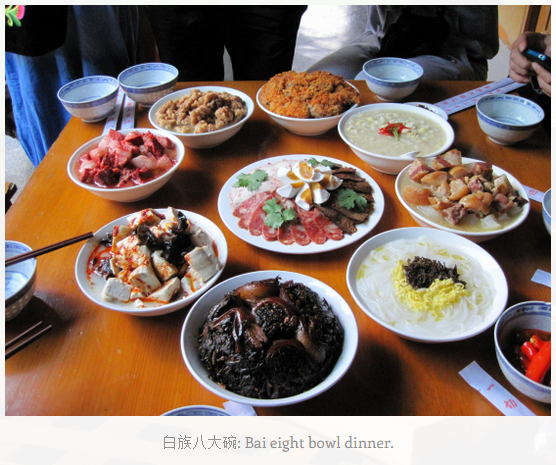
Eight Bowls of Bai People in Jianchuan,Dali
The “Eight Bowls” used in the weddings or funerals is the concentrated reflection of the traditional cooking culture of Bai People. The old fashioned square table for eight people (carved marble square table) takes eights dishes, known as “Eight Bowls”. The Eight Bowls of Bai People has appropriate collocation of meats and vegetables, fat but not greasy, plain but not light, with rich nutrition. Covering fry, crisp, stewing and boiling, with colorful brightness, extruding vinegar-pepper flavor of the diet of Bai People.
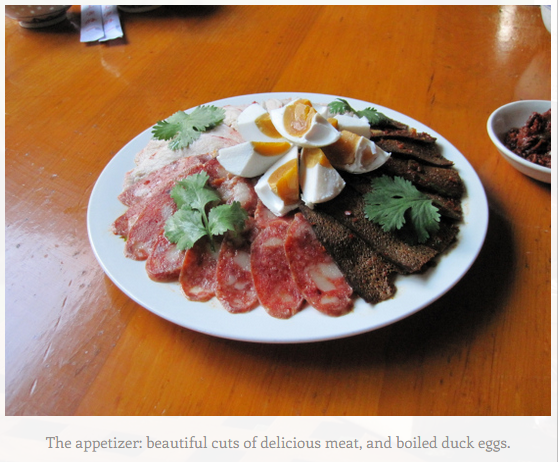
The first plate, which was a sort of appetizer. It was an amazing plate of what we Westerners might call charcuterie: assorted slices of meats, served with boiled duck eggs. The meats included beef, pork, and liver. They were all simply brilliant: each variety of meat burst with rich, intense meaty flavor, complemented with a dash of exotic spices. And the duck eggs had that rich, brothy element that chicken eggs just cannot quite attain.
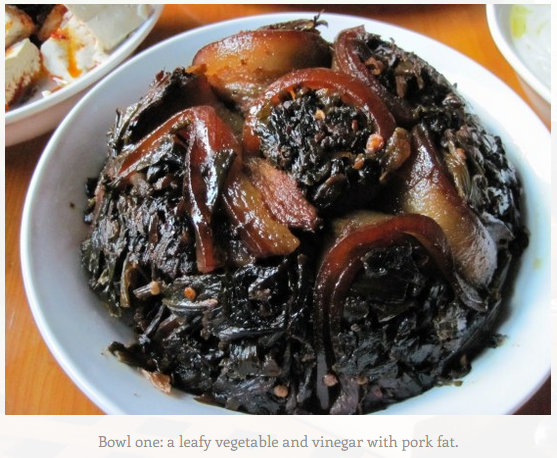
The first bowl was pickled Chinese cabbage with fatty pork. This is one of the best dishes I have ever had. It consisted basically of Chinese cabbage and spices pickled in a rich, dark rice vinegar, along with the pork. The flavor was profoundly sour and tart, with a complex bitter undertone. The cabbage alone would have been too intense for most people, but the luscious, fatty pork balanced the sourness with rich, salty meat. The flavor was extremely complicated and complex, with a richness that is only found in the most aged Western cheeses.
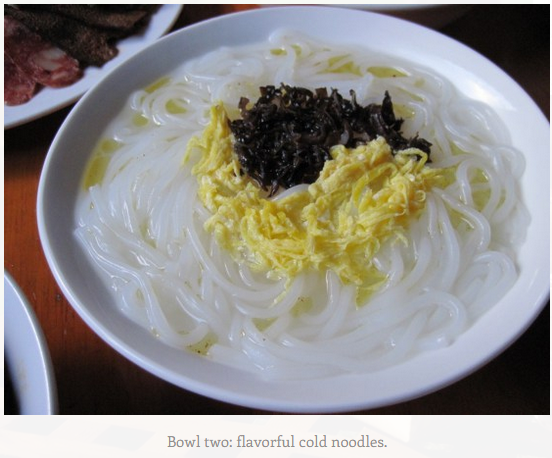
The second bowl was a dish of cold rice noodles with boiled egg yolks and wood ear mushrooms. The flavor was delicate, with a hint of white vinegar, the richness of the egg yolks, and the earthy, woody flavor of the mushrooms. I saw this dish as a sort of palate cleanser for the pickled pork dish.
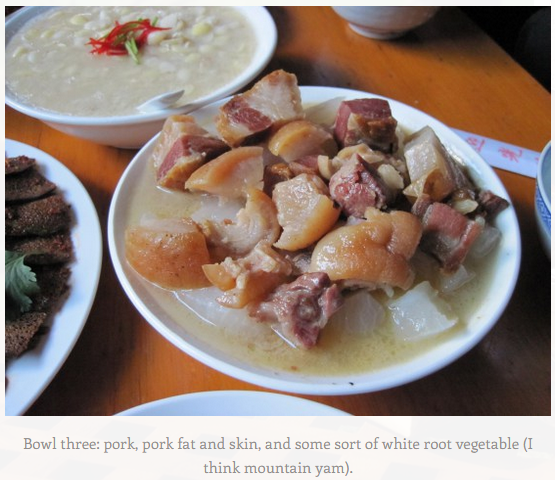
The third bowl was mountain yam in a flavorful broth, topped with — you guessed it — fatty pork. But lest you imagine the pork to have been overwhelming overkill, keep in mind that the Chinese people are the greatest butchers in the world: they know a pig’s body like no one else, topping even the French in using literally every part of a pig’s body for food. So although several dishes involved pork, each dish had its own cut of the pig that was perfectly suited to that dish. The pork in this dish was rich, but not overly organic in flavor, perfectly suiting the thick mouthfeel of the mountain yam.
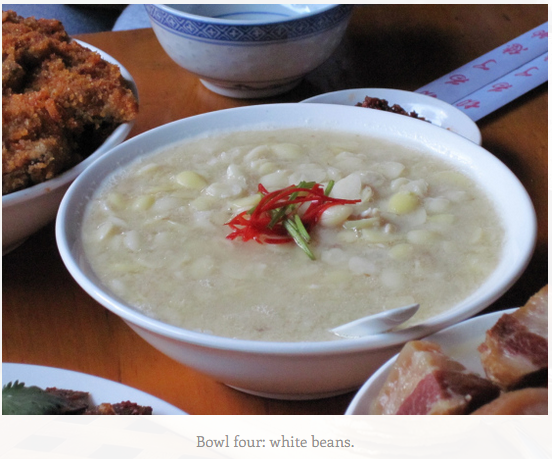
The fourth bowl was a dish of local white beans, flavored with chives and mild red peppers. The texture was thick and milky, but the beans were by no means overcooked. In fact, they had a perfect balance of smoothness and crispness. The flavor was warm and full-bodied. The beans themselves had a crisp but earthy element.

The fifth bowl was full of flavorful river fish, topped with a flour breading. The flavor was very nice: like fresh, crisp river sweetness, with the fuller flavor of the breading, and a mixture of garlic and other spices.
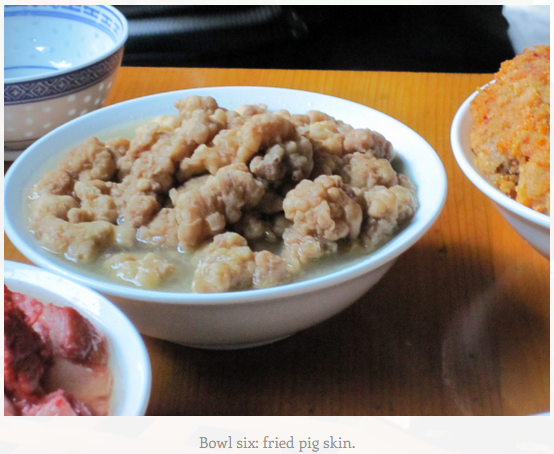
The sixth bowl was fried pig skin(酥肉). This dish was, without a doubt, the richest, fattiest, most succulent and luxurious dish. But despite what you might imagine, it was not at all greasy or oily. Rather, it was soft and tender.
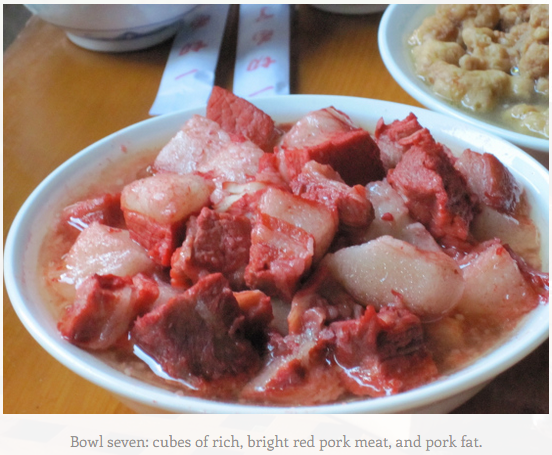
The seventh bowl (pork again!) was cubes of pork with a very substantial texture, along with pieces of pork fat. Remember though that every dish had a different cut of pork suited just for that dish. This particular cut of pork was meaty and thick, but still tender. Because of the bright pink-red color of this pork, the meat was partially cured before it was stir-fried. The flavor bore my theory out. Besides preservation, meat is cured to greatly concentrate and intensify the flavor. The bright pork flavor in this dish was extremely concentrated, the very spirit of pig flavor.
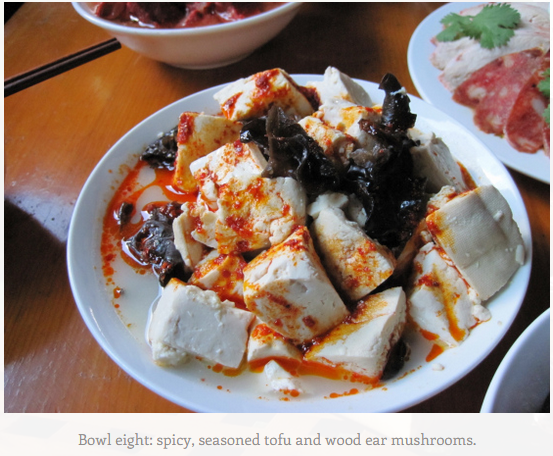
The eighth and final bowl was light, fluffy tofu with wood ear mushrooms and a spicy red chili sauce drizzled on top. The flavor combination of these three ingredients was masterful. The soft, mild tofu and the full-bodied earthiness of the mushrooms were accented by the piquancy of the chili oil.
You will only receive emails that you permitted upon submission and your email address will never be shared with any third parties without your express permission.
